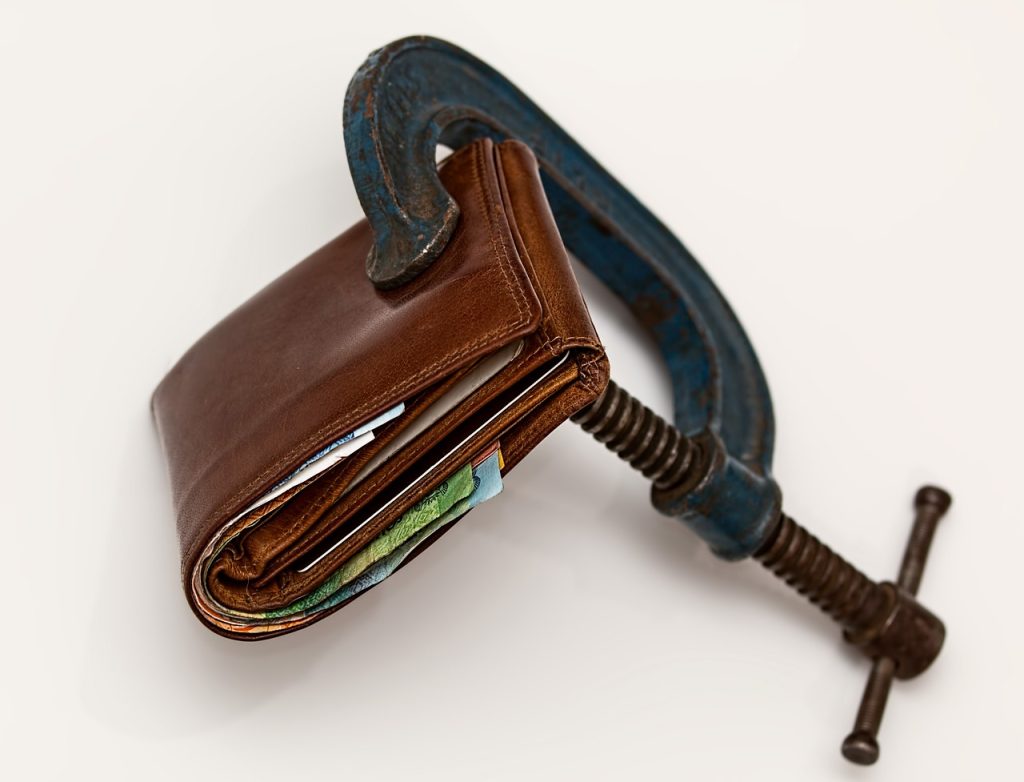December 11, 2023 – Although inflation in Croatia is currently decreasing more slowly than expected, the forecast is not bad at all.
As Poslovni writes, inflation and the global tightening of monetary policy, which has been absent for several decades, are the main determinants of market movements that, after last year, have largely characterized this year as well. Regarding this episode of tightening global financing conditions, the governor of the Croatian National Bank (CNB), Boris Vujčić, will say that for the time being, it is passing without any serious upheavals in the domestic market.
He is of the opinion that “the too slight increase in deposit rates for citizens and the increased profitability of banks, which are the neuralgic points of the current financial landscape most often highlighted by the public, is actually a very benign outcome of monetary tightening” which was not guaranteed by anything. Previous experiences, he says, have been exactly the opposite.
“Domestic interest rates would usually dance to even the smallest breeze that would blow in from the global financial markets, and the macroeconomic vulnerabilities of the domestic economy would particularly strengthen the effects of stronger global earthquakes.
This time is different: in the conditions of global interest rate growth, domestic companies are for the first time borrowing money on similar terms as their competitors in the euro area, while housing loans for citizens, for example, are slightly cheaper than for Germans or Austrians”, he pointed out recently in a column.
Link to Euribor
Even consumers who have “old” housing loans felt the tightening of monetary conditions more or less only through the cessation of the until recently stable trend of decreasing loan installments, he underlined. At the same time, for a large number of consumers in the euro area, interest rates rose sharply and strongly, by 4-5 percentage points. When it comes to consumers, stronger effects were felt in the country only on the small number of cash loans linked to the Euribor (only 3 percent of all such loans are of this type, and they are mostly of shorter terms), on which interest rates rose from around 6 percent at the beginning year to today’s almost 8 percent.
If most loans were granted with variable interest rates linked to Euribor, a noticeable increase in repayments would become the norm. The overall effect on consumers would undoubtedly be stronger, as installments on almost all loans would increase. In this hypothetical scenario, the profitability of the banks would, according to the governor, grow much stronger than it did, and even if slightly higher interest rates on deposits would somewhat cancel out the impact of higher interest rates on loans.
This scenario is a reality in a number of euro area member states, as well as in some EU countries outside the euro area. In the Baltic countries, for example, interest on housing loans reached 6 percent, and the return on bank capital exceeded 30 percent in the first half of the year. This is almost twice as much as the profitability of Croatian banks, says the head of the CNB, suggesting that the recent favourable outcome in terms of loan prices in the country is not exactly a matter of luck.
With the National Reference Rate (NRS) as the dominant parameter for determining variable interest rates, he attributes this to ongoing efforts to strengthen consumer awareness of the risk of interest rate increases, as well as developing consumer protection mechanisms. So today there are about 120 thousand consumers with housing loans who have protection against interest rate risk in the form of fixed rates or a specific (multi-year) period in which the rates do not change.
Nevertheless, public opinion is still divided about the timing of the introduction of the euro in the wake of high inflation. Some point out that in Croatia, in addition to significantly lower salaries, inflation in some months was three percentage points higher than in the rest of the eurozone, while others refer to (higher) rates of inflation and yields on government debt in EU members outside the eurozone. Likewise, some of the economists believe that, if Croatia decided to introduce the euro, the state could/should have previously withdrawn a significant part of the existing excess liquidity in the system and used the reserves created from the primary issue to, for example, reduce the public debt.
Winners of the First Year
The thorn in the side of some, however, is the huge profits of the banks, the growth of which is due mainly to the growth of interest income, which they obtain from overnight deposits with the CNB in conditions of large liquidity surpluses. This, along with the ECB’s deposit rates, could bring them more than 450 million euros of “easy” income this year. Many therefore see them as the main winners of the first year of Croatia’s participation in the Eurosystem.
Be that as it may, some other topics that marked this year are mostly derivatives of the story about inflation and the euro, ie the turn of the ECB’s monetary policy. This also applies to the acceleration of the growth of nominal wages and the recovery of real wages, as well as to the ongoing initiatives related to savings alternatives in conditions of weaker interest transfer on interest on citizens’ bank term deposits.
The state also made an important step towards offering an alternative this year. In borrowing operations, it began to turn to households as well, offering them a more profitable option for conservative investment of their money. First, by issuing a two-year national bond, and recently by enabling investment in treasury bills as an instrument of short-term financing of the state. Those two offers of better interest rates compared to banks resulted in a response from citizens of more than 2.3 billion euros.
After the debut of the national bonds, the banks themselves, instead of offering higher interest rates on savings to their clients, were more aggressive with offers of the so-called funds with maturity as a means of intermediate investment in bonds. Admittedly, this option does not offer yields like a national bond, but they are still higher than the interest on deposits, which in most banks were around zero during the summer. Recently, the first monetary ETF (Exchange Traded Fund) in Croatia was launched with a similar mission.
Those who are not satisfied with only partial protection against the loss of the real value of savings in conditions of increased inflation are referred to riskier investment options. In addition to the proverbial propensity of Croats to invest in real estate, it is also stocks. The Crobex index of the Zagreb Stock Exchange, for example, is up by more than 20 percent today compared to the beginning of the year.
By the way, in the fight against inflation in Croatia, the main tool of monetary policy is the raising of key interest rates. Given the distance from the medium-term target of two percent inflation, the Governing Council of the ECB, from last July to September of this year, at ten meetings in a row reached out to raise its interest rates, which were increased by a total of 450 basis points (4.5 percentage points).
October “break”
With the easing of inflationary pressures and increasingly clear signals of economic slowdown, a “break” finally happened in October. Analysts are now more concerned with estimates of when the end of a historically strong cycle of interest rate hikes will turn into a change in direction. Speculations about their cutting (in the spring of next year?) are particularly fueled by the weak recovery of German industry and expectations of a more or less stagnant euro area economy in 2024.
Although inflation in Croatia is currently decreasing more slowly than expected, according to forecasts, Croatia should also be in the group of countries with above-average real GDP growth next year. The government is counting on a rate of 2.8 percent, and although the EC’s estimate is a slightly lower 2.5 percent, it is four times more than the growth forecast for the euro area as a whole.
After last year’s double-digit rate, inflation in Croatia will be significantly higher than the eurozone average this year as well (forecasts say 8 percent). From the beginning of 2021 until today, according to the CBS, consumer prices in Croatia have cumulatively increased by about 26 percent. The inflation gap compared to the rest of the eurozone began with the first indications that the date of the introduction of the euro will definitely be January 1, 2023, and the gap has been hovering between two and three percent for some time. According to EC forecasts, things will turn around next year: inflation is forecast to drop to 2.4 percent for Croatia and 3.2 percent for the eurozone as a whole.
Domestic analysts, admittedly, are not quite convinced that the expected stabilization of energy and food prices will have a stronger effect on the inflation rate in Croatia than elsewhere. Mostly they don’t see it below three percent. By the way, a year ago, the impact of the introduction of the euro on inflation was often questioned in the context of “hunting in the dark” and the expansion of profit margins in the period before the changeover to the euro. However, the CNB and the Government still claim that the introduction of the euro alone did not have a significant impact on the general price level, i.e. that it is within the framework of earlier estimates and predictions.
“None of the bad scenarios happened. And the expected positive effects of the introduction of the euro in Croatia have been fully realized. From the removal of currency risk, and relatively lower interest rates to lower transaction costs and greater resistance to financial crises and shocks,” the governor recently reiterated. Different positions on the euro are usually cemented. The fact that the series of improvements in Croatia’s credit rating coincided with last year’s confirmation by the EU Council will hardly change that, and the rating agencies explicitly stated this as one of the reasons.
The public is hearing more and more often that Croatia could receive an “A” credit rating next year. Time will tell whether and to what extent this will affect the decline in the risk premium. The yield on the 10-year Croatian government debt is currently slightly above 3.8 percent, or about 1.3 percentage points higher than on the comparable German bond.











